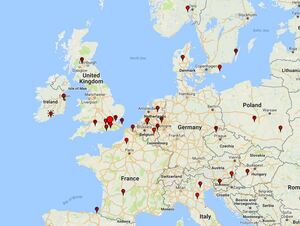After a month of monitoring the HF bands during the second annual CARC WSPR challenge I though it would be fun to have the station listen for a different type of data transmission. With April heralding an increase in random meteor activity 50, 70 and 144MHz will soon come alive to the chirp of data bursts from across Europe. A new and interesting mode is quickly gaining a following in the MS community, MSK144. The name is derived from the modulation, MSK (minimum shift keying) and 144, the total number of bits in a message. Not to be confused with the 2m band as it’s also used on 6,4 and 2m.
The software you’ll need is either WSJT-X, the experimental version of WSJT which can be downloaded here: http://www.physics.princeton.edu/pulsar/K1JT/wsjtx.html
or MSHV which is an alternative application supporting popular data modes at VHF, http://lz2hv.org/mshv
I’ve tuned the K3 to 50.280MHz, pointed the antennas east and left the software listening to the noise. A useful feature of both bits of software is that they can send “spots” to the PSK Reporter website. This allows you to see what you’ve heard, a bit like wsprnet. In the last 24 hours these are the results:

https://pskreporter.info/pskmap.html
A total of 19 DXCC in 24 hours. Not bad considering that 6m appears dead and the meteor rate has yet to pick up. If you’d like to hear more come along to the VHF propagation talk in May. In the mean time get listening on 6m. You might even take the plunge and make a few QSOs.